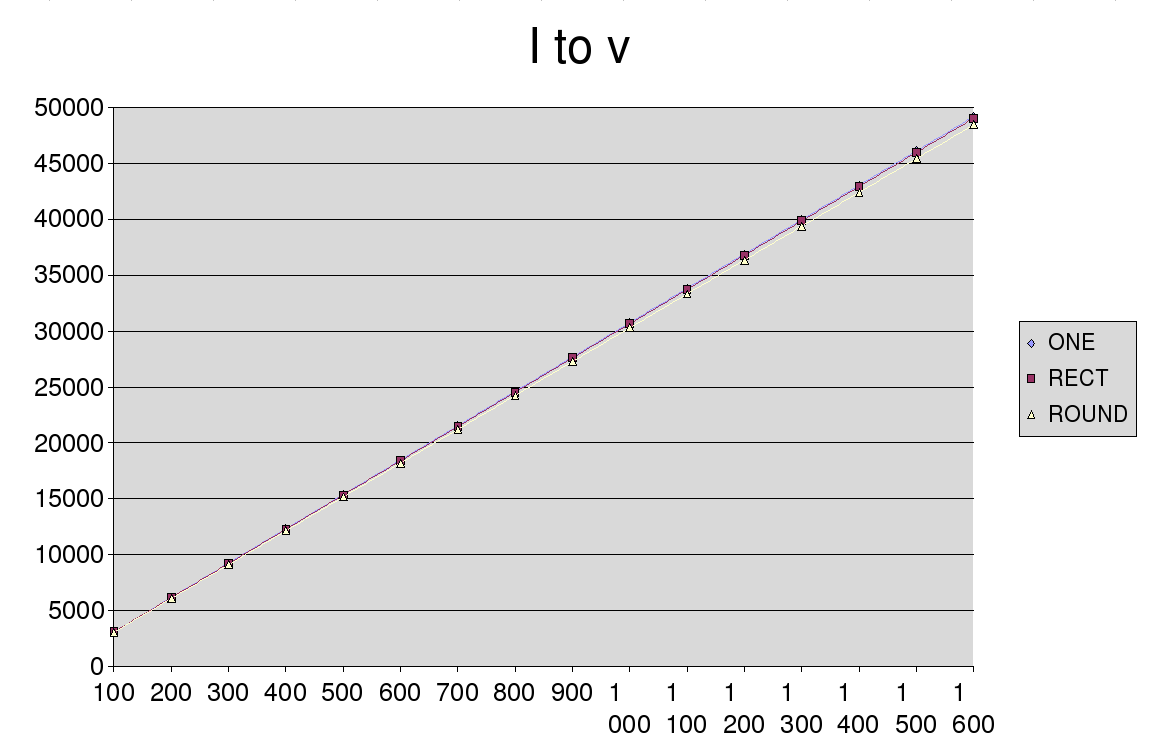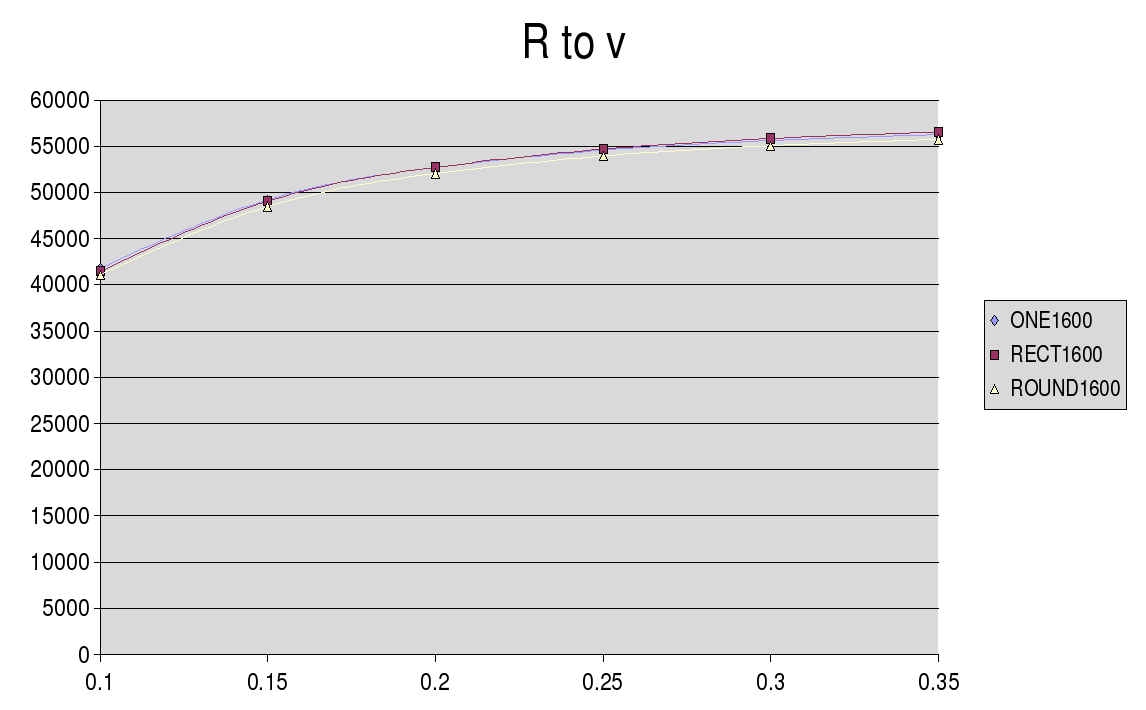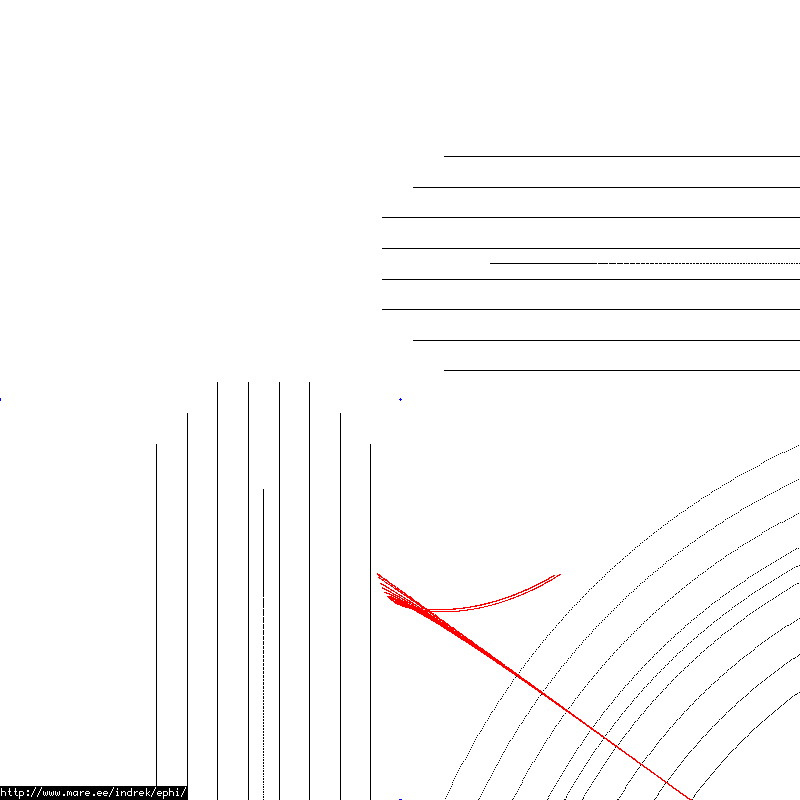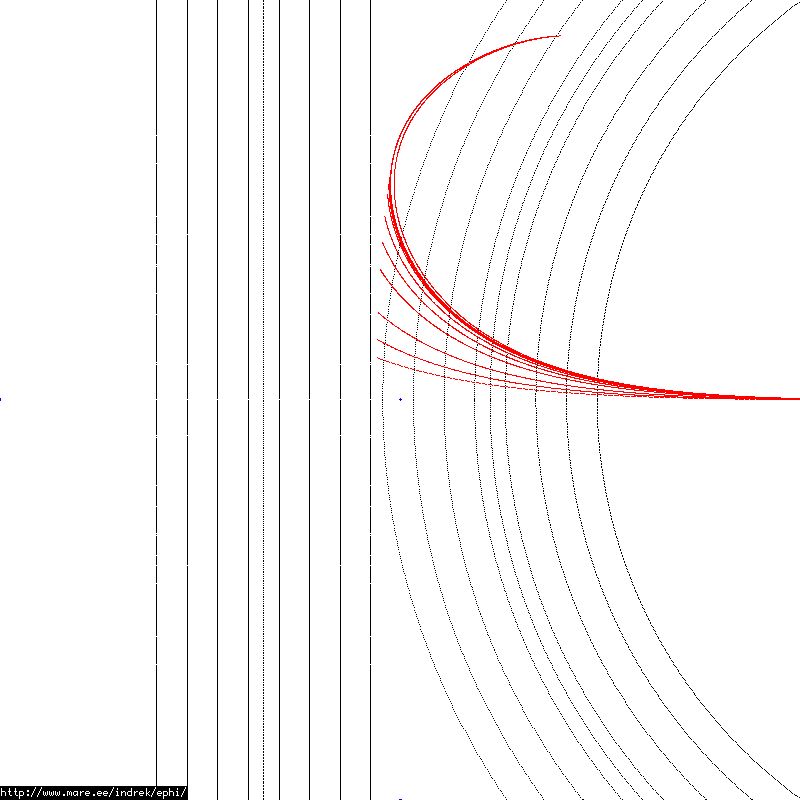
We find the maximum speed we can shoot electrons at a specific point on the coil in the cube polywell with them still being deflected.
We shoot electrons from the middle of the systems towards the middle of a coil body at the position where coils are spaced the closest in the cube polywell.
Coil cross-section diameter is 7 cm, spacing between coils was kept at 1cm. Round and rectangular cross-section shapes were emulated through a shaped 8x8 matrix of rings of current but the coils were covered by virtual round shell (of the same size for all configurations) that caught the electrons. No electric fields were present. The round coil is at a disadvantage compared to the square as rectangular coil surface-area is smaller.
Data produced:
| One loop: | polywell_pierce_one.csv |
| Rectangular: | polywell_pierce_rect.csv |
| Round: | polywell_pierce_round.csv |
| Excel sheet: | polywell_pierce.xls |
With different coil radiuses the cross-section diameter was kept the same. The maximum energy one can shoot at any spot towards the coils is probably lower than these values, but this here is just an arbitrary selection.
Interpretation: as you can see already very low current can successfully deflect electrons of quite high energies. Also you can see that the speed of the electrons (km/s) here is in linear dependance to the current (b-field).


Finding the maximum speed, XY-projection:

Finding the maximum speed, XZ-projection:
